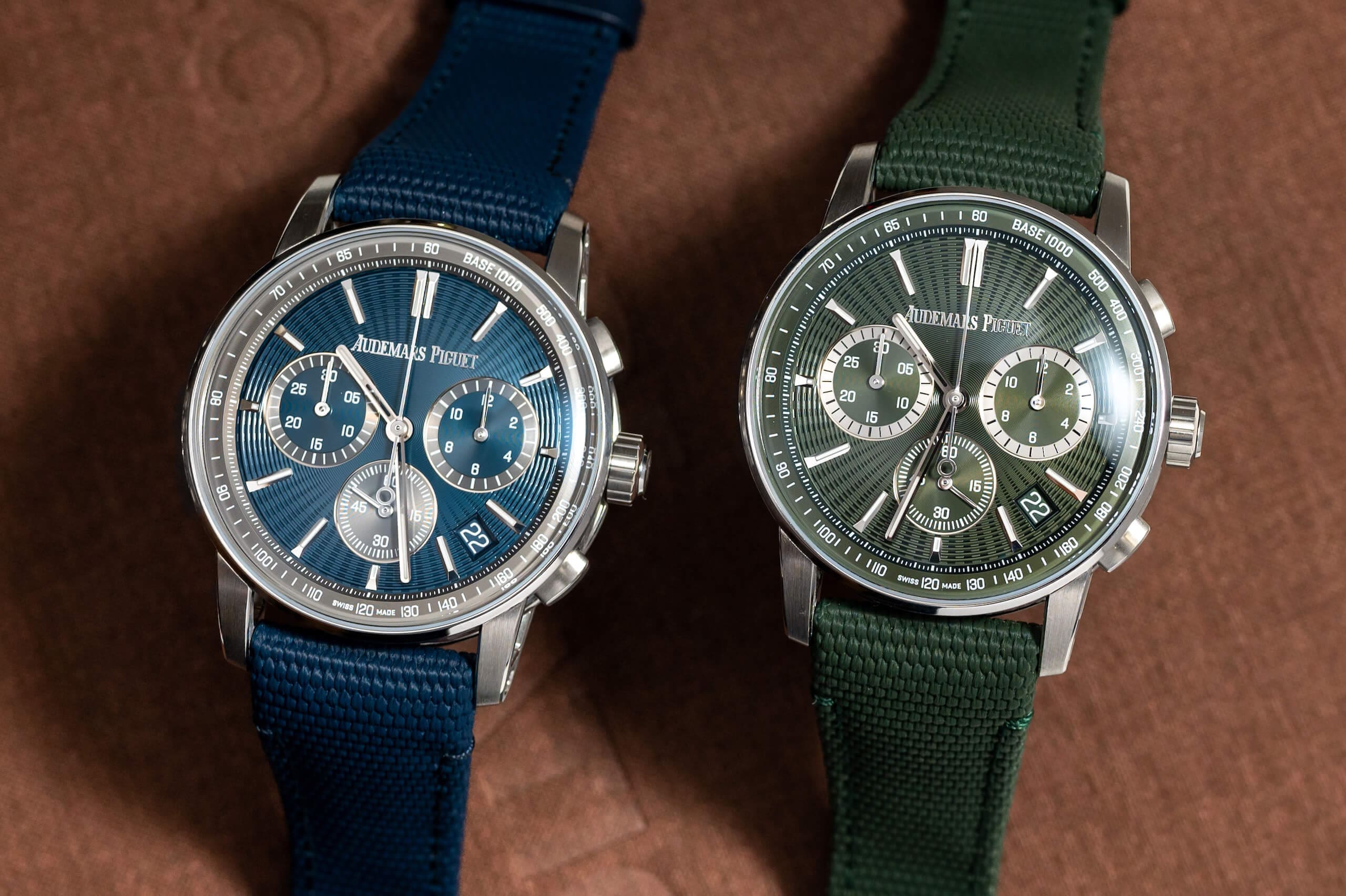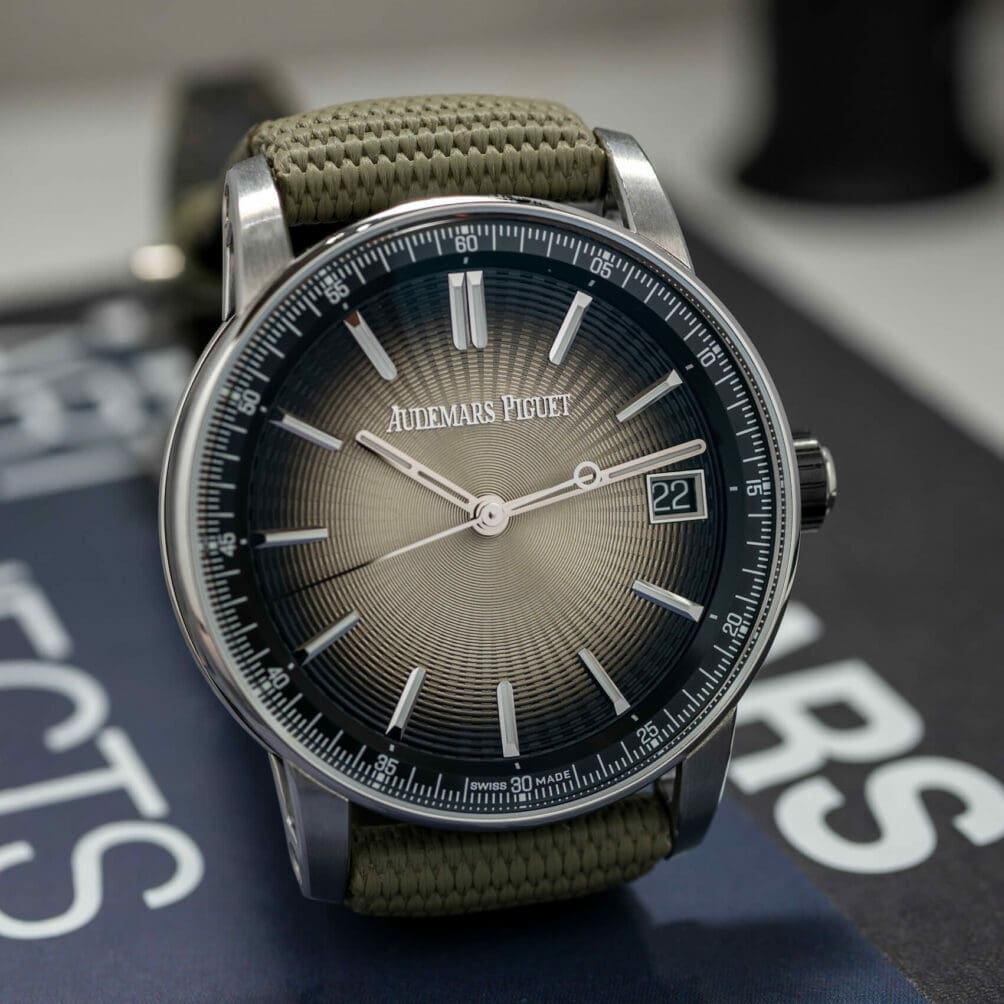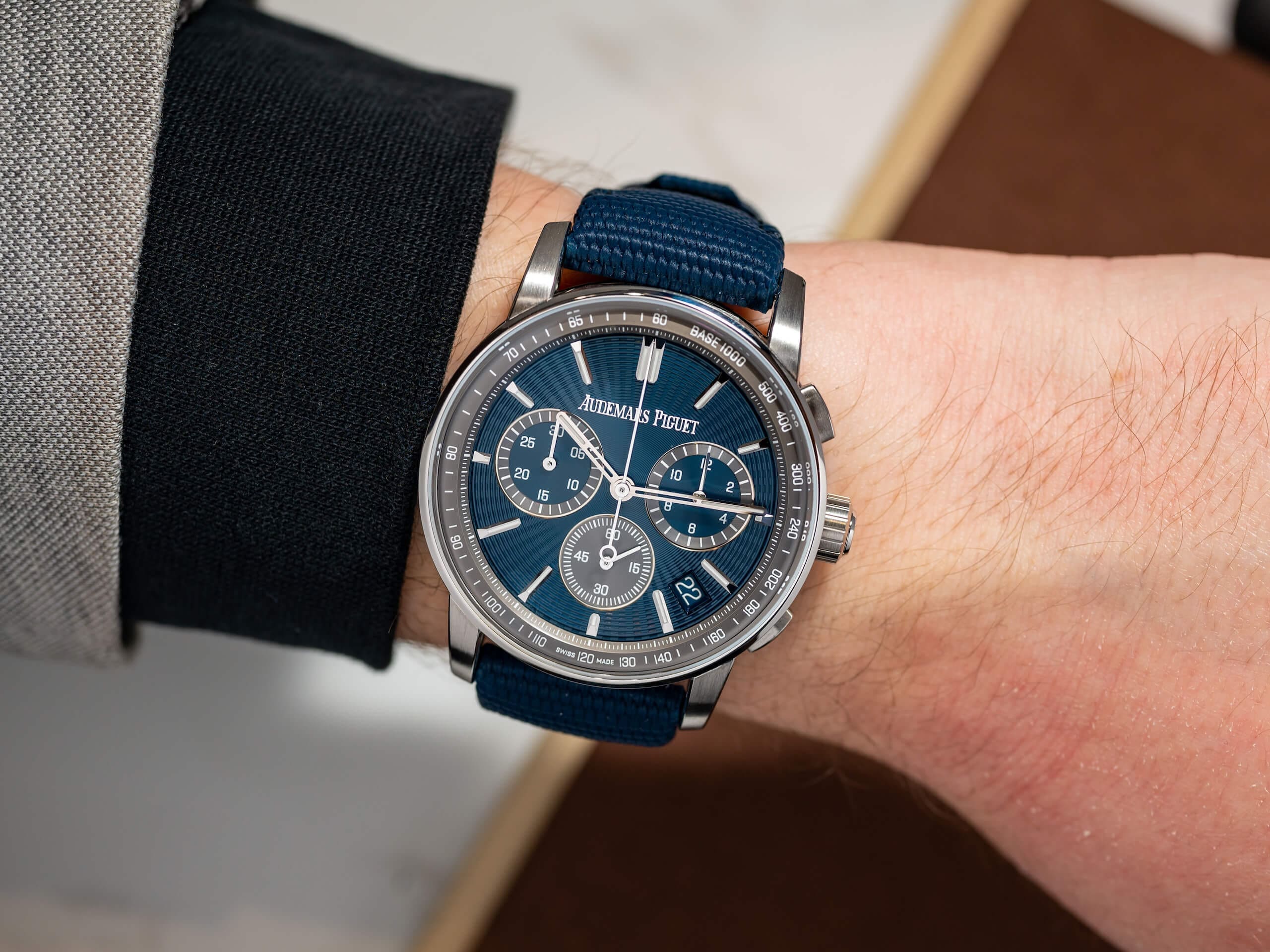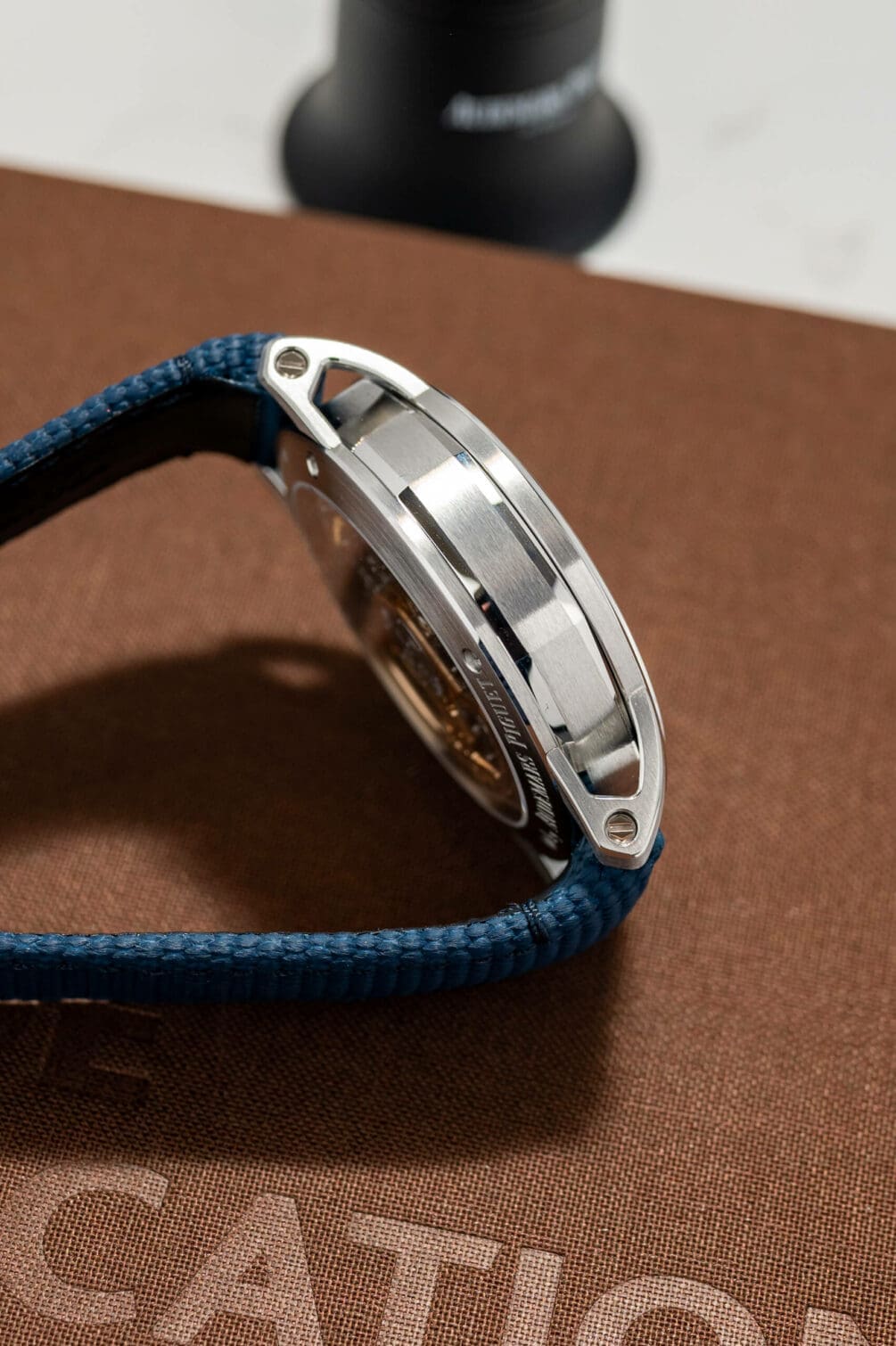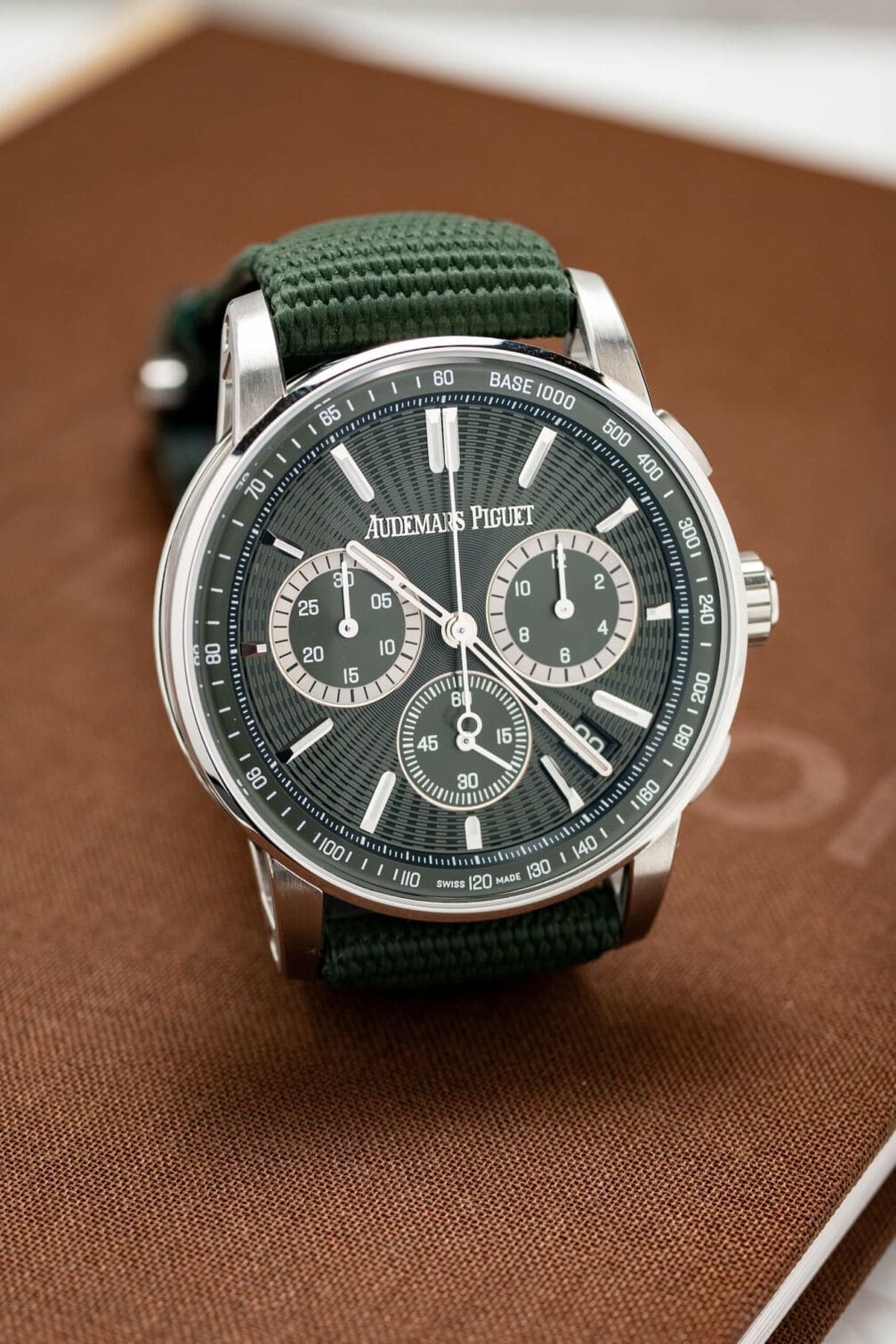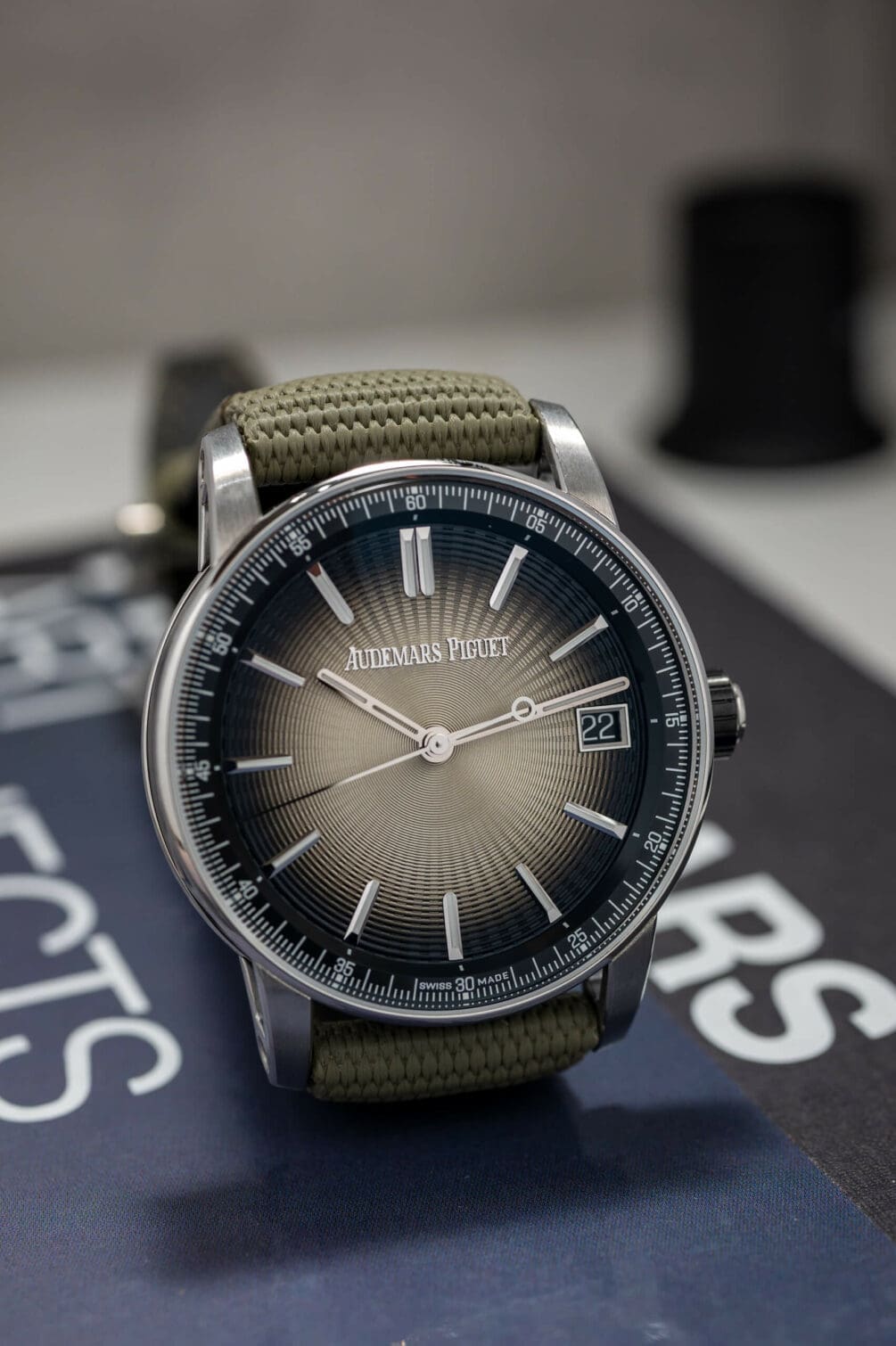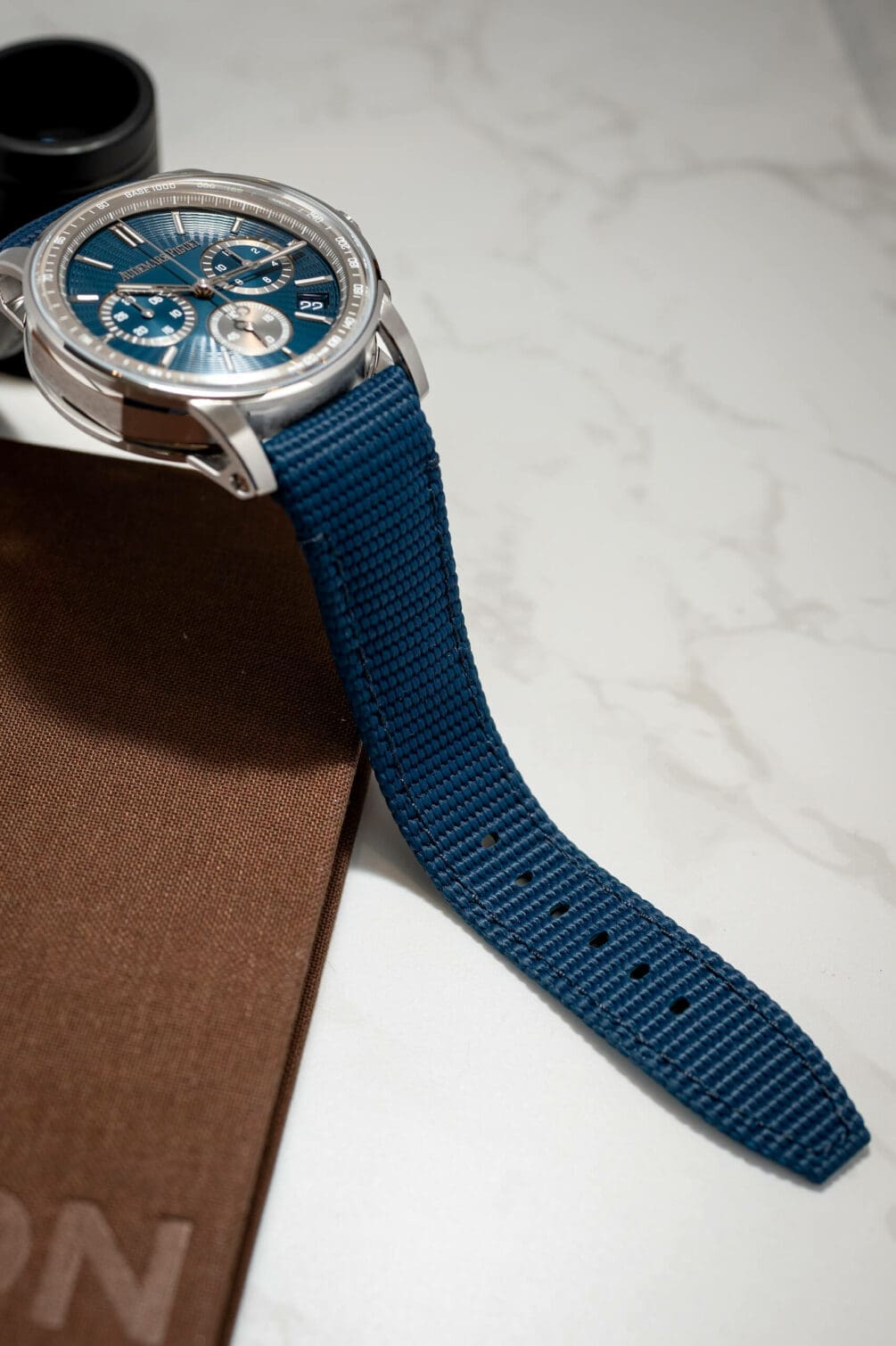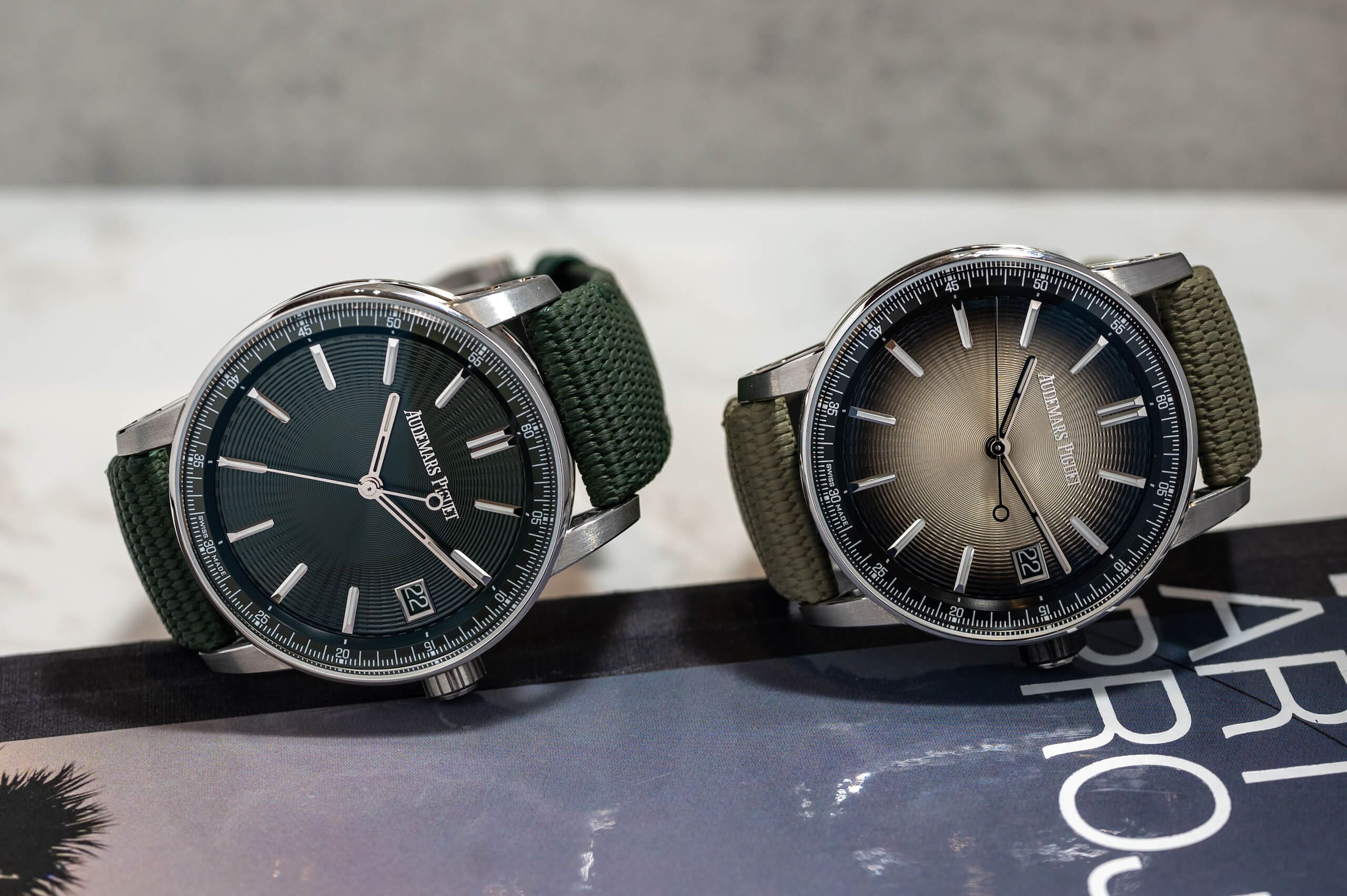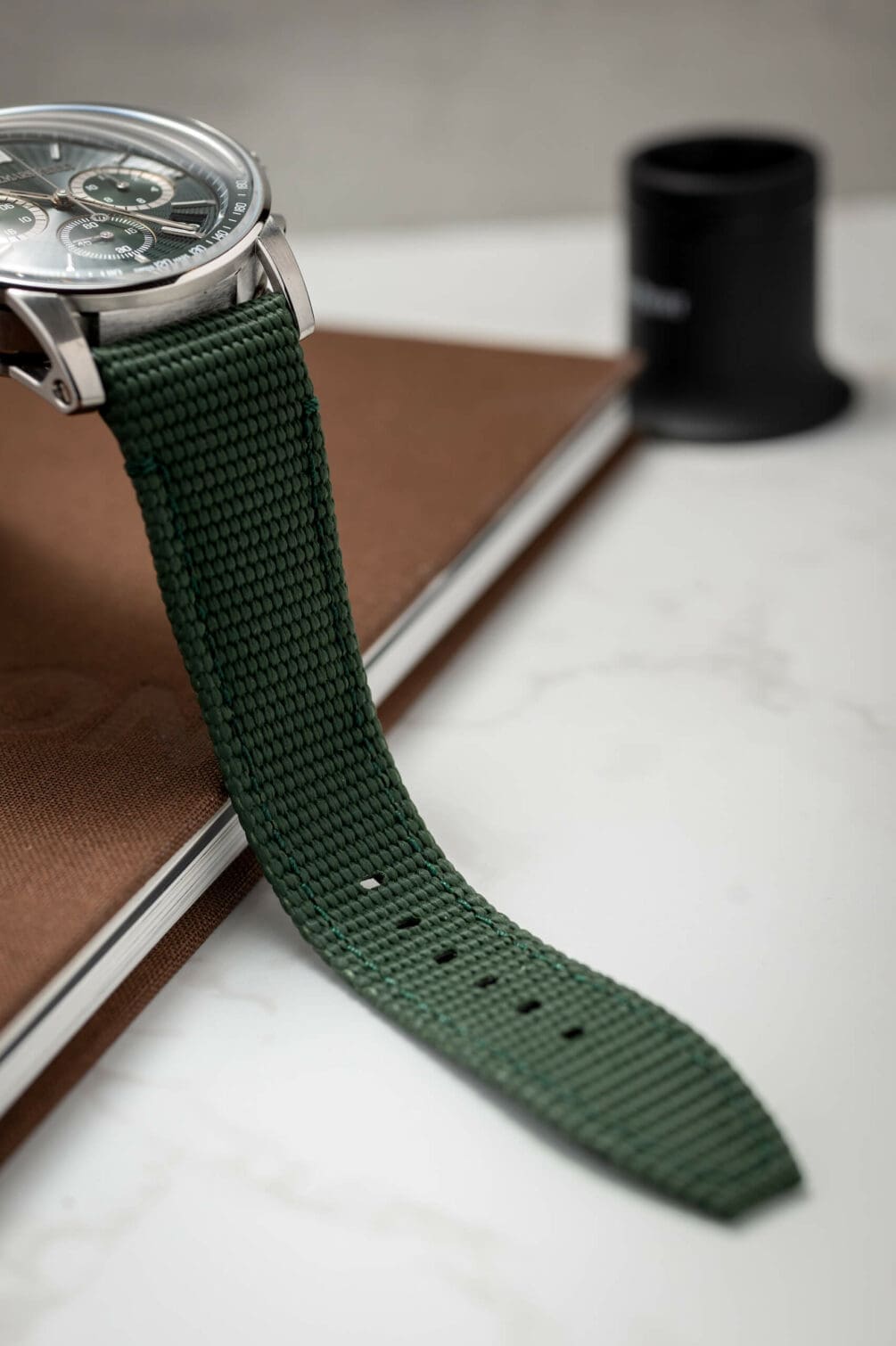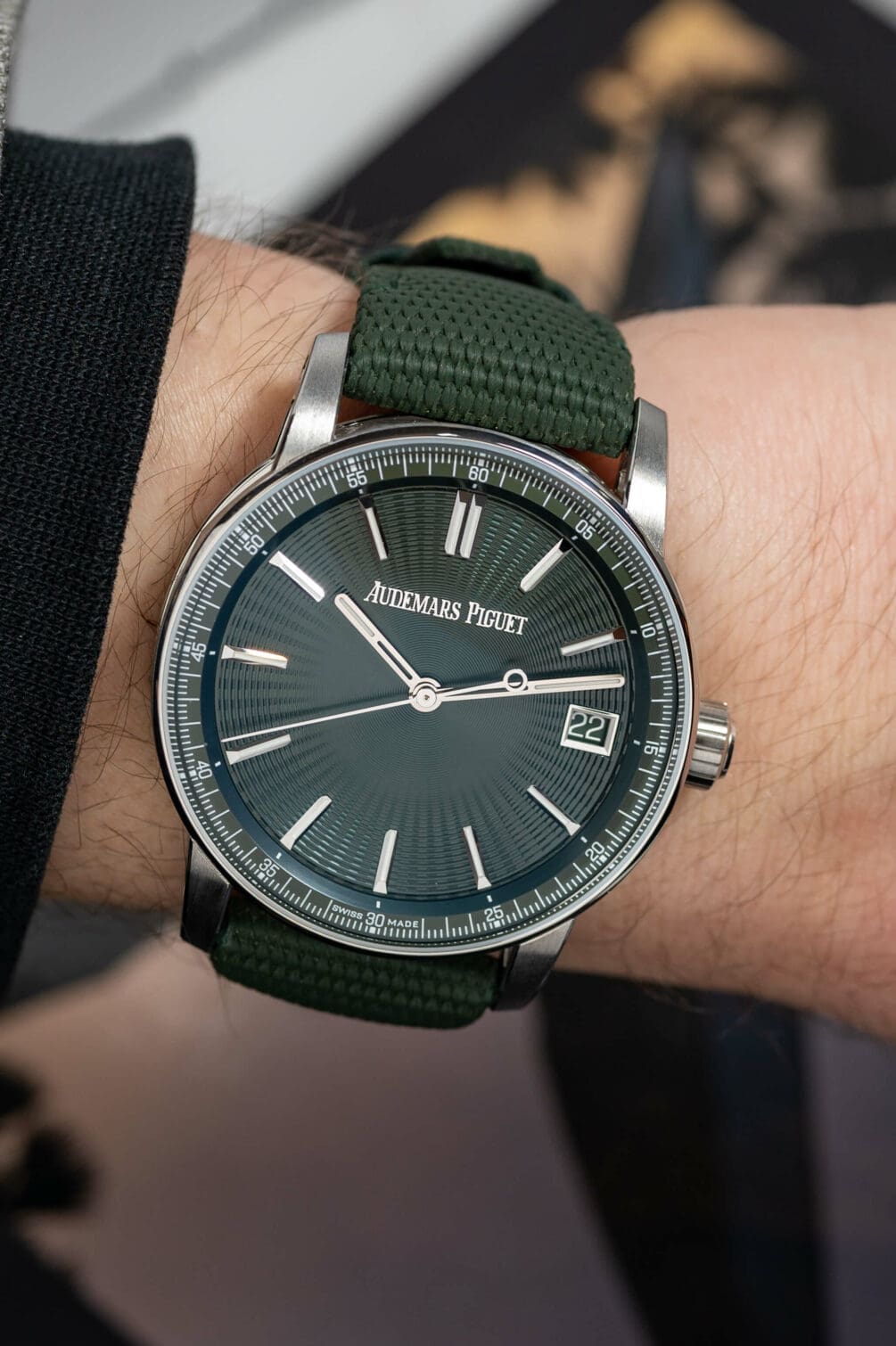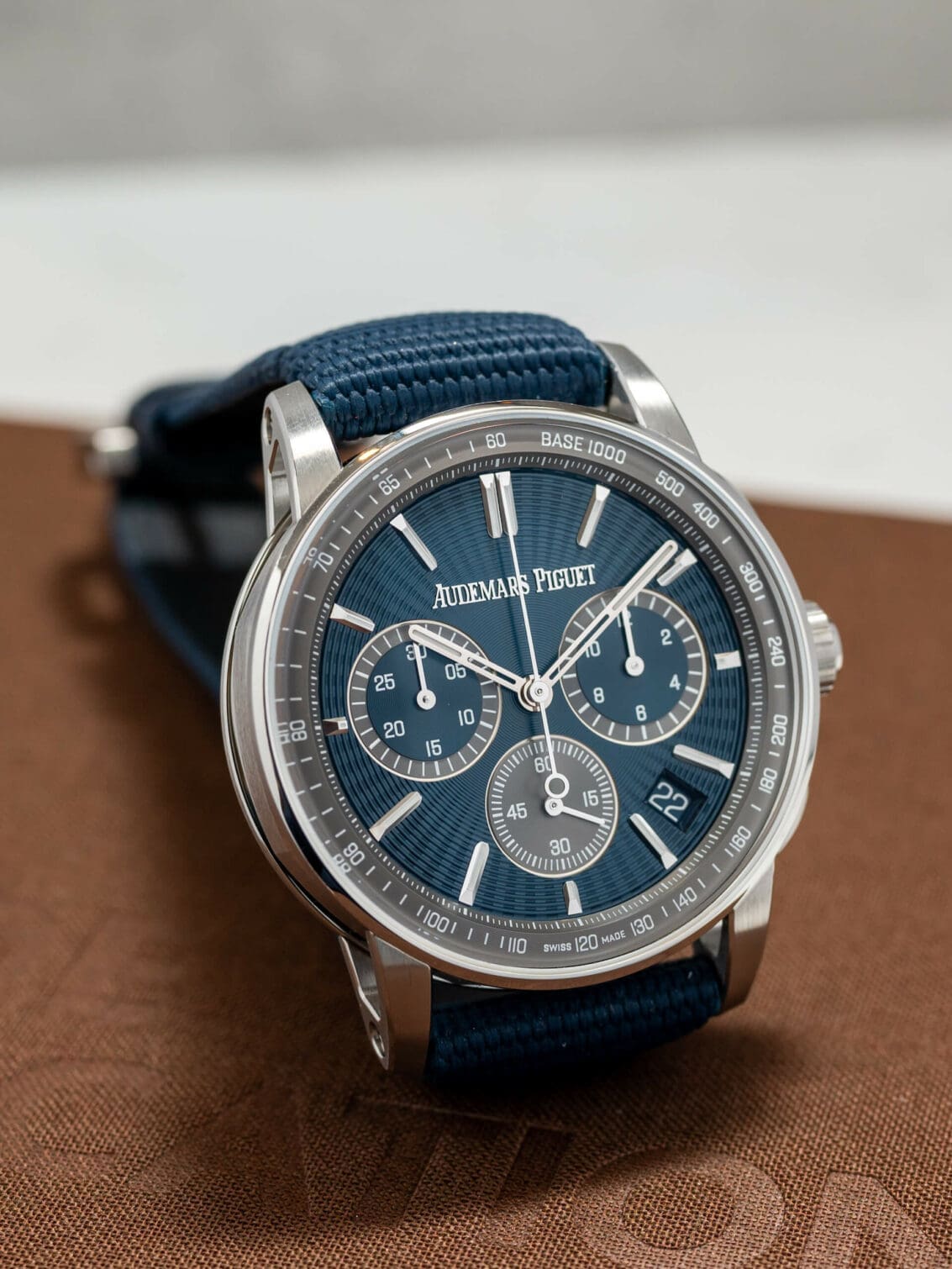HANDS-ON: The Code 11.59 by Audemars Piguet in steel is winning over doubters of the collection
Zach BlassThe Code 11.59 by Audemars Piguet has been a hot subject of debate since its debut in 2019. It’s fair to say, as historically happened with other references of theirs like the Royal Oak, the collection was not immediately accepted with unanimous approval by watch enthusiasts. With great anticipation built around the release, and an aggressive marketing campaign rolled out upon its introduction, the bar was raised so high that the Code 11.59 by Audemars Piguet set itself up for an intense level of scrutiny. Naturally, as an Audemars Piguet creation, there inevitably was going to be a huge level of discussion regardless. After balancing the scales of social media sentiment though, it seemed the considered perspective was that the collection had its quirks but also a real foundation for potential growth. In the years since, the collection has evolved with handset and dial refinements. And, at the upper-end, looking at their openworked and high complication references, the model’s promise became clearer and clearer. The only thing that was arguably left was to bring the entry-level tier of the collection up to spec, and now it appears the holy trinity manufacture has done just that with their new Code 11.59 by Audemars Piguet models in stainless steel.
The cases
Previously, the Code 11.59 by Audemars Piguet was limited to precious metal. The introduction of steel allows the watches to be presented at a lower price point, making the collection more approachable for newcomers to the brand. Six configurations comprise the steel segment of Code 11.59 by Audemars Piguet, with three time and date models and three chronographs. Each have the same trio of dial/strap colourways: blue, green, and a smoked beige. I mention these dial shades in advance because the blue and green models utilise 41mm cases in stainless steel, and the smoked beige models continue AP’s trend of pairing metal with ceramic – its midcase and crown are in black ceramic. Executing the intricate architecture of the Code 11.59 by Audemars Piguet case in steel took some time to develop from a manufacturing perspective, but the result is exactly what we have come to expect from the collection.
As I explained in a previous review, the case-making process leverages three centuries of watchmaking – combining traditional finishing with cutting-edge modern fabrication and machining. As an example, a heated conveyor-belt system is utilised to create and form the lugs (modern technique) but they are then hand polished with a root from a specific tree (classic technique). This thin detailing to the lugs really elevates the aesthetic of the watch, and, in steel, the chamfered lines continue to stand out. These polished surfaces are complimented by a rich brushing – a great balance of mixed finishes that elicit a level of light play associated with the brand.
Obviously, while both cases are 41mm in diameter the thickness varies between the time and date and chronograph models. The time and date models are more slender, clocking in at a rather skimpy 10.7mm in thickness, and the chronograph models are admirably under 13mm thick at 12.6mm. Both measurements were cuff-friendly from my experience, each easily sliding under my sleeve. At a measurement of approximately 50mm lug-to-lug for each segment, these watches are by no means classically proportioned across the wrist. That being said, I felt I could pull them off on my smaller 6.5-inch wrist so I would not prematurely deem yourself incapable of sporting its dimensions without trying it on “in the metal”.
My one challenge for improvement would be to heighten the depth rating if possible, which currently is just a splash-resistant 30 metres. While of a meticulous construction and elegantly decorated, these watches, were they to be 50 metres or more water-resistant, would offer a whole other dimension to their daily wear experience and general versatility.
The dials
Now, I have already mentioned the blue, green, and smoked beige colour options, but the real visual evolution presented in the new steel Code 11.59 by Audemars Piguet watches is their new stamped guilloche dials. Developed with Swiss guilloché craftsman Yann von Kaenel, Kaenael was tasked with handcrafting the stamps that would be used to produce both the time and date and chronograph dials. Hand-engraved, the stamp carries a wavy pattern that moves out from the centre of the dial – with hundreds of tiny holes that heighten the sunburst reflection. While the chronograph models continue to utilise the controversial 4:30 position for the calendar complication, the time and date models have been updated to host the calendar at the 3′ position. A small detail that will go a long way with prospective buyers within the enthusiast space. Another aspect dial purists will appreciate is that the date wheels have been well colour matched to the dial, the smoked beige model utilising a black disc that blends with the smoked outer perimeter. And, speaking of the smoked beige configurations, it makes sense these are the models that incorporate the ceramic midcase and crown as the black colour of the material ties into the black outer edge of the smoked dial.
Beneath the double curved and glare-proofed sapphire crystal, the inner bezels host raised rings with scales that then slope down into the stamped dial. For the chronograph models the flat portion is the home of the tachymeter scale, and the sloped portion the outer minutes track. For the time and date models, the flat portion hosts the outer minutes track and the sloped portion hashes to support the applied hour indices. Ultimately the design choice allows the stamped centre to live with as little interruption as possible – in the case of the time and date model strictly the luminous applied indices and in the case of the chronograph model the indices and three registers.
While wonderful from a legibility perspective, I remain conflicted about the running seconds counter at 6′. You will notice that the register does not follow the same format as the elapsed hours register at 3′ and elapsed minutes register at 9′. The elapsed-time registers have a contrasting ring surrounding an inner coloured medallion. The running seconds counter, however, does not follow suit in this bordering. And, on the blue model in particular, the counter is executed in a full contrasting grey (whereas the green model has a full green counter to match its dial). The borderless aesthetic makes it easy to discern the 6′ register does not serve the chronograph function like the other two. Personally, I would have preferred more uniformity across the registers and trusted myself with distinguishing the functionality. Ultimately, symmetry and balance is still upheld – the layout-contrasting running second counter situated dead centre between two registers in a matching layout style. So, not the end of the world, more a what if? experiment then anything else.
The straps
Normally a collection like this would be bound to traditional calf or alligator leather straps, but I respect Audemars Piguet for exploring a strap pairing with more modern sensibilities. It makes sense considering the collection is positioned as the future of the brand, or at least its latest evolution. So, to break tradition with a textile upper and leather under is a fitting move in my book. It offers a more youthful aesthetic, implicitly reminding its owners you do not need to be wearing a suit to wear this watch. The casualness of it removes a sense of stiffness, and suggests it is worthy of daily wear. Personally, I find the straps to be very comfortable on the wrist. I do think though, for smaller wrists like mine, it would be worth punching two more holes into the strap to accommodate a better fit. But this is a simple enough operation for AP or a trusted watchmaker to carry out for you if needed. The straps are also notably rubber-coated to protect against moisture, and secured to the case with screws rather than springbars. This only adds to my argument that an increased depth rating would be a great evolution.
The movements
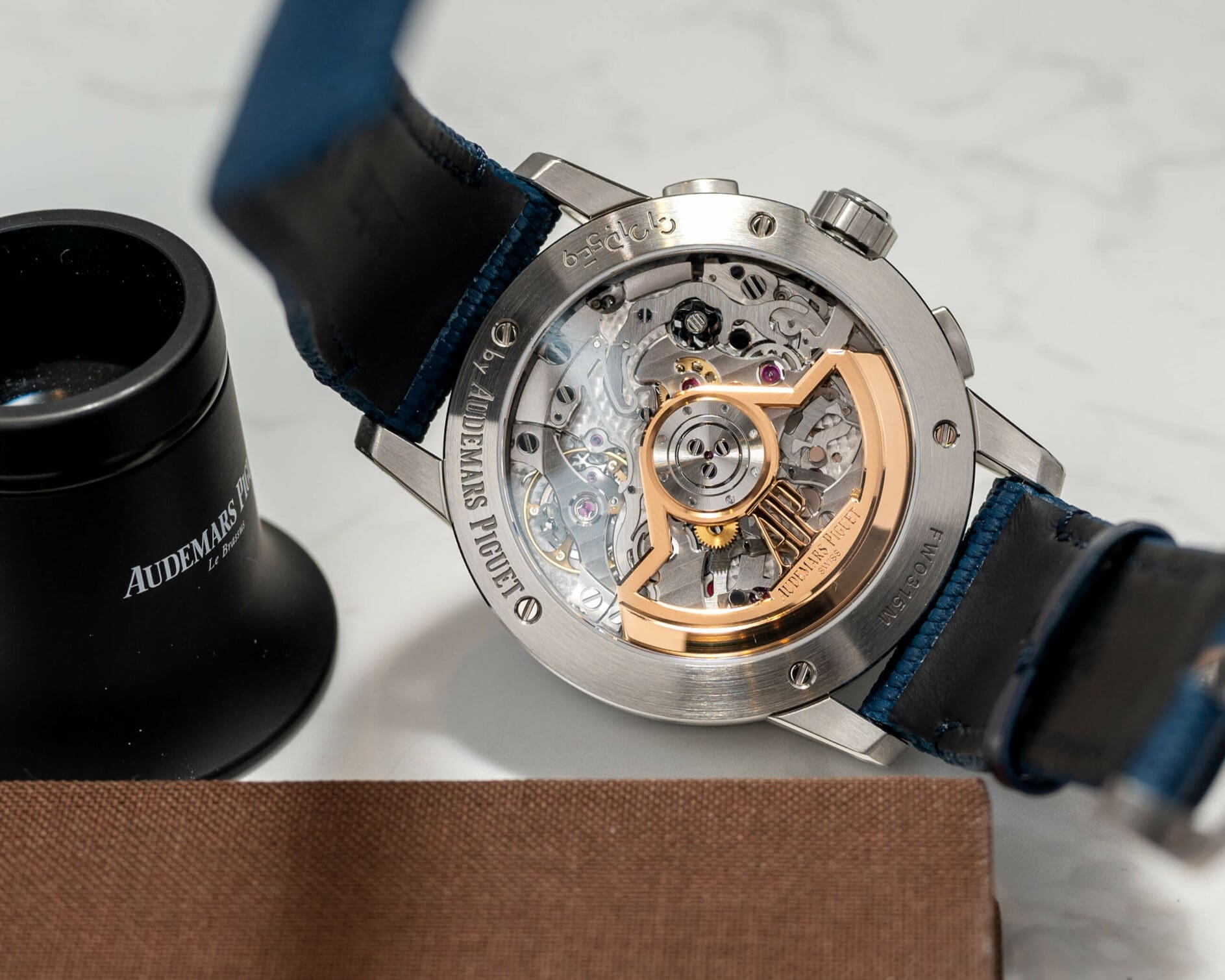
Both watches utilise automatic calibres with 70 hours of power reserve, their calibre 4302 for the time and date models and their calibre 4401 for the chronograph models. While, perhaps, not to the same extent as the openworked models within the Code 11.59 by Audemars Piguet collection, the movements are nicely finished in a manner befitting the brand’s reputation. Traditional perlage, Côtes de Genève, and thin chamfering can be seen throughout the calibre with minor obstruction thanks to an openworked solid gold rotor that also features rich polishing and beveling. The calibre 4401 is a vertical clutch column wheel flyback chronograph movement, which means you can run the chronograph constantly with less wear to the components and you are able to reset the chronograph complication without stopping it first – a practice that would damage standard chronograph calibres.
The verdict
The new Code 11.59 by Audemars Piguet watches in steel are proof the collection is really coming into its own – we are far past the awkward puberty stage. At the high-comp end of the spectrum things were already heating up, but now the entry point is very strong as well. The stamped dials look great in the metal, the straps are super comfortable, and the case finishing is top-notch as always. The usage of steel definitely opens the doors of the collection wider for buyers to engage with the brand, and with its strategic and handsome refinements – at least within my circle of #watchfam – is convincing more and more people this collection is worth exploring.
Code.1159 by Audemars Piguet in steel pricing and availability:
The Code 11.59 by Audemars Piguet collection in steel is now available for inquires. Price: Full pricing details below
| Brand | Audemars Piguet |
| Model | Code 11.59 by Audemars Piguet Selfwinding / 41mm |
| Case Dimensions | 41mm (D) x 10.7mm (T) |
| Case Material | Stainless steel (15210ST.OO.A343KB.01 / 15210ST.OO.A056KB.01) Stainless steel with black ceramic midcase (15210QT.OO.A064KB.01) |
| Water Resistance | 30m |
| Dial | Bleu Nuit, Nuage 50 (15210ST.OO.A343KB.01) Green (15210ST.OO.A056KB.01) Smoked beige (15210QT.OO.A064KB.01) |
| Crystal | Double curved glareproofed sapphire crystal and exhibition caseback |
| Strap | Dial-matching leather and rubber strap with stainless steel AP pin buckle |
| Movement | Automatic calibre 4302 |
| Power Reserve | 70 hours |
| Functions | Hours, minutes, seconds, date |
| Availability | Available for inquires now |
| Price | US$25,300 / CHF 21,000 (blue/green), CHF 23,000 (beige) |
| Brand | Audemars Piguet |
| Model | Code 11.59 by Audemars Piguet Selfwinding Chronograph / 41mm |
| Case Dimensions | 41mm (D) x 12.6mm (T) |
| Case Material | Stainless steel (26393ST.OO.A343KB.01 / 26393ST.OO.A056KB.01) Stainless steel with black ceramic midcase (26393QT.OO.A064KB.01) |
| Water Resistance | 30m |
| Dial | Bleu Nuit, Nuage 50 (26393ST.OO.A343KB.01) Green (26393ST.OO.A056KB.01) Smoked beige (26393QT.OO.A064KB.01) |
| Crystal | Double curved glareproofed sapphire crystal and exhibition caseback |
| Strap | Dial-matching leather and rubber strap with stainless steel AP pin buckle |
| Movement | Automatic calibre 4401 |
| Power Reserve | 70 hours |
| Functions | Hours, minutes, small seconds, date, flyback chronograph |
| Availability | Available for inquiries now |
| Price | US$35,000 / CHF 29,000 (blue/green), CHF 31,000 (beige) |




